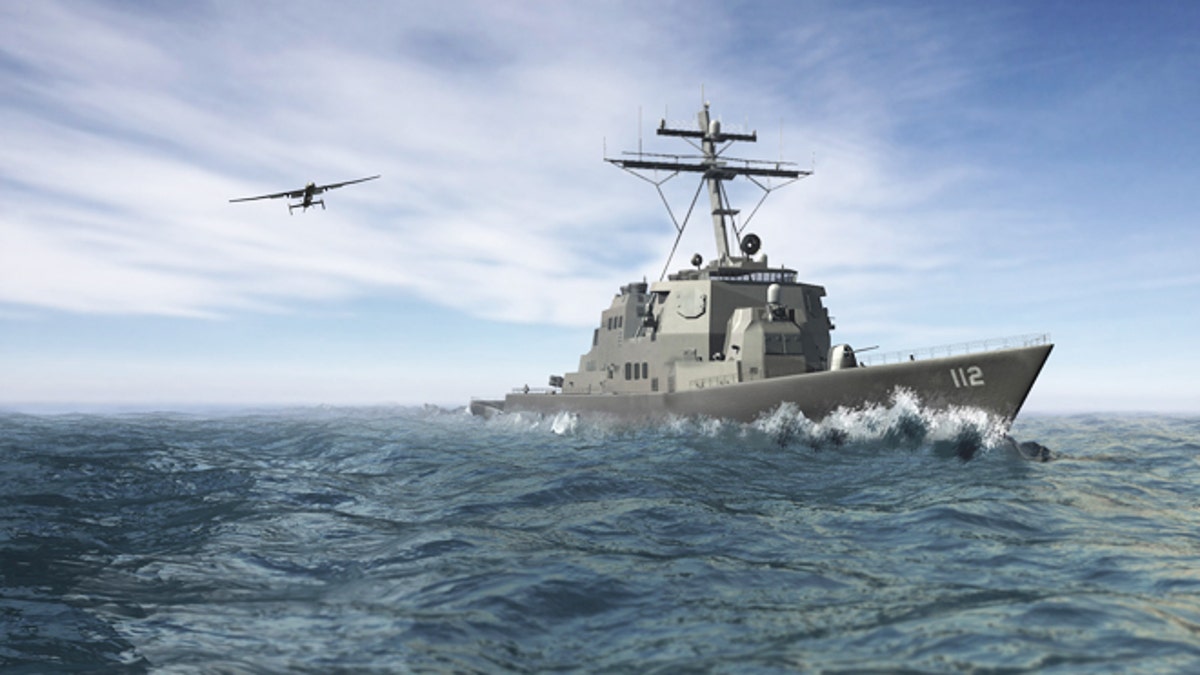
The military seeks a way to launch drones from smaller ships, greatly increasing their range for surveillance and intelligence. (DARPA)
Independent drones that don’t need bases could give the U.S. military quicker and more flexible reaction to hotspots.
Today’s unmanned airplanes launch from bases on land or, in some cases, large ships. To increase their range, military researchers on Tuesday sought a system to allow small ships to launch these MALE drones -- that’s short for medium-altitude long-endurance aircraft, of course, not a reference to the gender.
Given nearly 100 percent of the world’s land area lies within 900 nautical miles of ocean coastlines, it would provide strike capabilities almost anywhere in the world.
Is it a bird or a drone?
The Tactically Exploited Reconnaissance Node (TERN) program is named after the tern, a seabird that possess remarkable endurance and can migrate thousands of miles every year.
In the Defense Advanced Research Projects Agency (DARPA) program, the MALE UAV will carry a 600-pound payload and operate 600 to 900 nautical miles from its home vessel. The launch and recovery system will fit Littoral Combat Ship 2 class ships and other surface combat vessels.
TERN will give the military the advantage to strike mobile targets anywhere in the world at any time around the clock. And it will give the military an easy, quick, cheap way to deploy intelligence, surveillance and reconnaissance systems.
“It’s like having a falcon return to the arm of any person equipped to receive it, instead of to the same static perch every time,” said Daniel Patt, DARPA program
manager.
Improving Current Capabilities
Airborne intelligence is a crucial asset for today’s warfare. Currently the military is limited to helicopters, fixed-wing manned and UAVs.
Fixed-wing manned and unmanned aircraft have good distance and endurance, but the problem is they require land bases with long runways or aircraft carriers. Helicopters can also provide such surveillance, but they have distance and flight time restrictions.
At Proposers’ Day -- held Tuesday, March 19 at DARPA HQ in Arlington, VA -- the agency sought proposals to design, develop, and demonstrate a MALE UAV with the novel automated launch and recovery system.
Developers will need to overcome big challenges: How to ensure a large aircraft can launch and land from a smaller ship in rough seas?
TERN will need to withstand the maritime environment as well, and fit within the limited space on ships while providing endurance and carrying ability comparable to its land-launched brethren.
It will also need to be designed in a way that requires minimal ship modifications and can work with limited operation and maintenance personnel.
Base-independent maritime and overland missions may be around the corner for TERN. DARPA plans to reveal a full-scale launch and recovery within forty months.
Ballet dancer turned defense specialist Allison Barrie has traveled around the world covering the military, terrorism, weapons advancements and life on the front line. You can reach her at wargames@foxnews.com or follow her on Twitter @Allison_Barrie.
